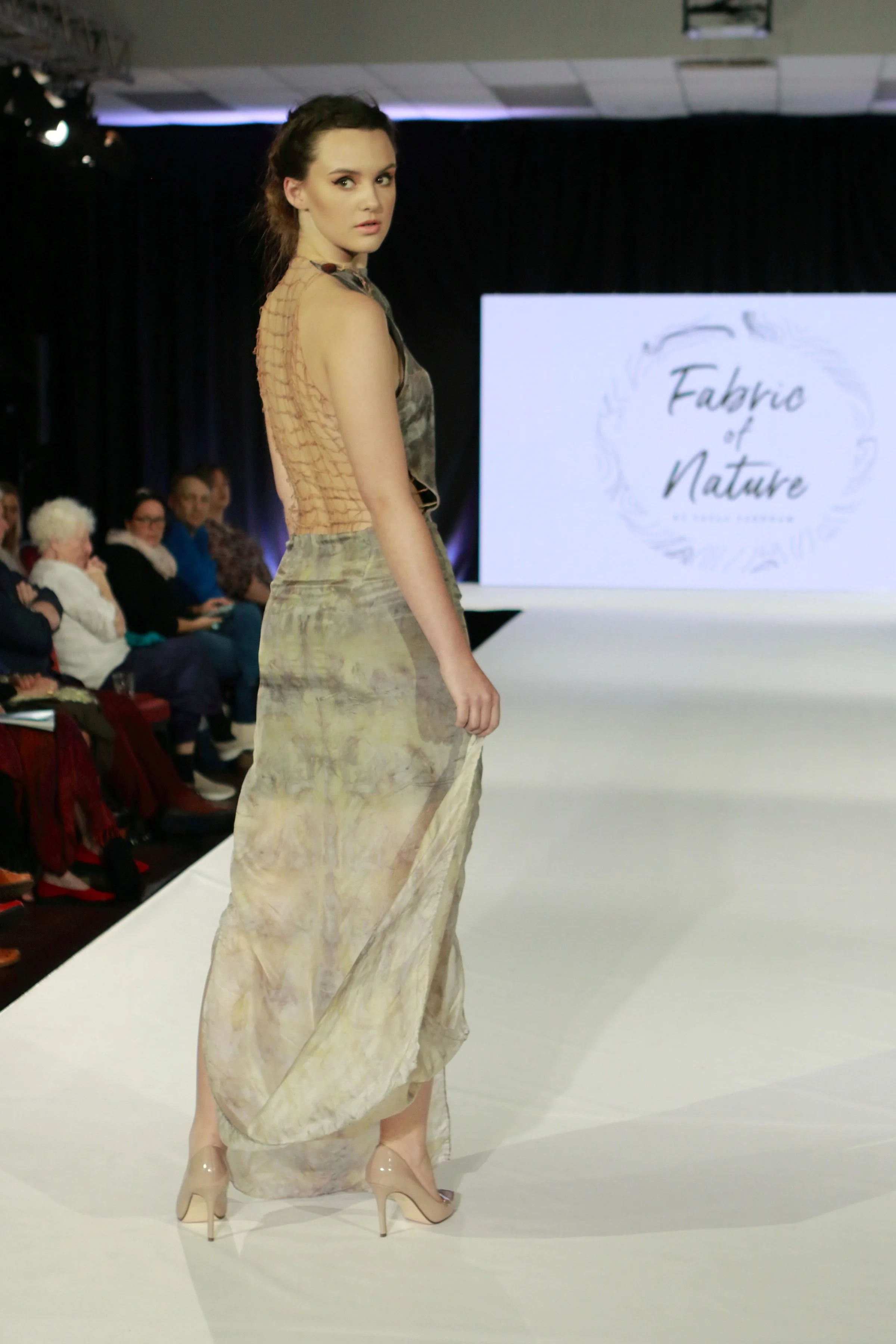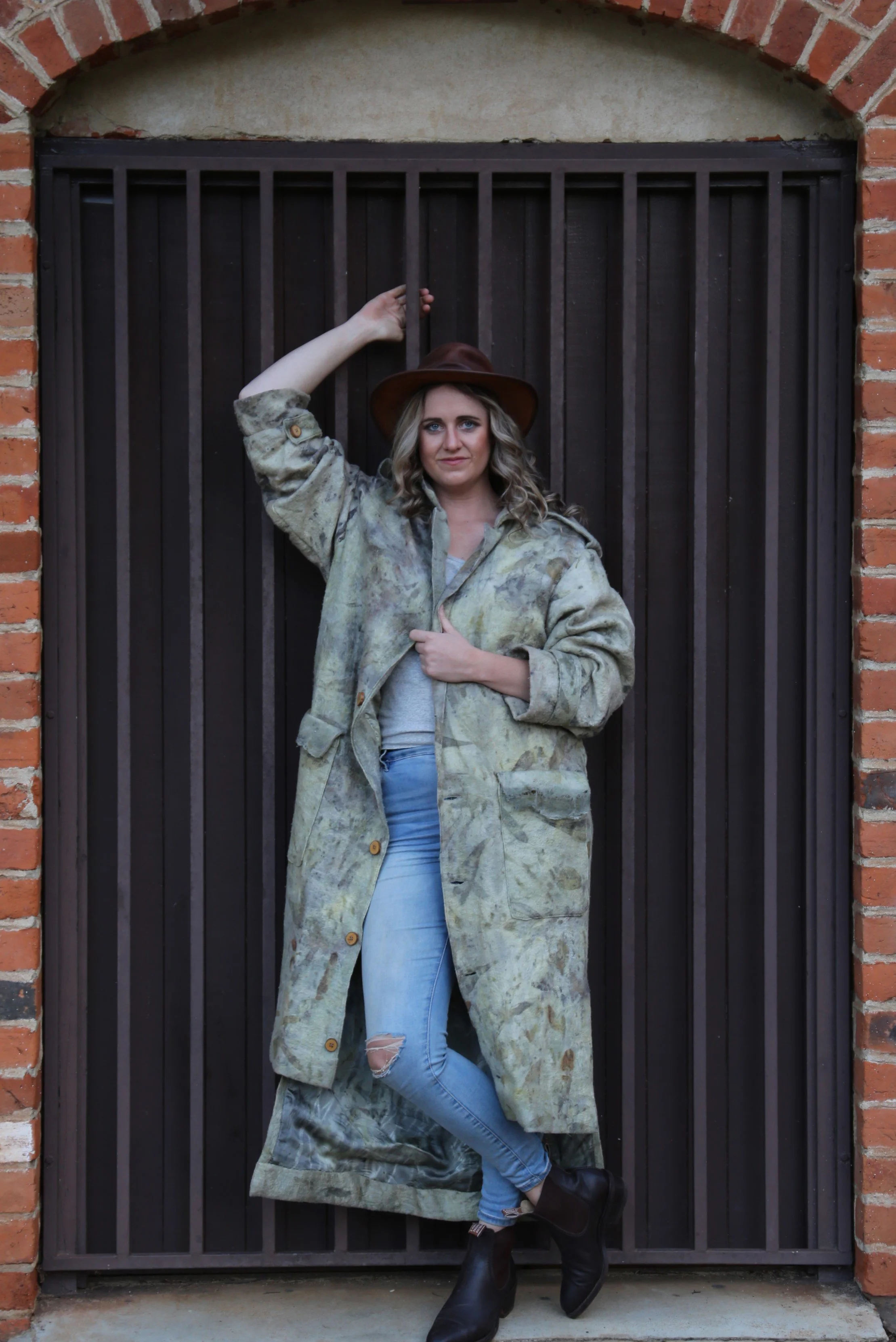Please share a bit about your journey to embrace fashion design as a career.
I have enjoyed making my own clothes since I was a kid. I enjoyed designing something no one else had.
How did you learn your skills?
I first learnt to sew when I was about 12 years old. For my birthday my granny gave me my very own Bernina sewing machine. She was a home economics teacher and taught me all sorts of sewing techniques (hand sewing, knitting and pattern making). At university I studied a double degree Bachelor in Arts and Science at ECU with a major in Fashion and Textiles. Plus I earned a major in Environmental Management. It was at university where I first learnt natural eco dying techniques which is something important in my work now. I was also taught making patterns by draping materials on the dress mannequin, which is something I do now in creating my designs/ patterns.
Who are you as a designer - aesthetic, customer, brand?
The Fabric of Nature label is about showing an appreciation and connection to natural environments through the types of techniques, materials and garment design. Naturally dying fabric with eucalyptus leaves is a meaningful part of the label's aesthetic. The trees leaves a direct memory from the natural environment, telling a story on the garment. Using tissue silks that are naturally dyed acts to mirror the fragility of our natural environments and bring awareness of the human impacts we can have on our them. I also explore upcycling and recycling materials. Previously I used more heavy work wear clothing like denim and flannel shirts as a contrast to the silks. I deconstruct and reconstruct recycled work wear that are worn, faded and bleached from the sun. The fabric tells a story of its past life working in the outdoors, but is also creating a new life for the worn out clothing saving it from going to landfill.
Why did you choose to focus on sustainable fashion? What additional challenges does that create?
Whilst at university I was also studying environmental management where I learned about conservation, soil and landform processes, wetlands, human impacts to the environment. I wanted to combine my two very different degrees to create meaning in both. My first collection, and the start of my label, looks at environmentally friendly and sustainable fashion. Being a sustainable fashion label it is slow fashion. Every garment is designed and created by me in my home studio. It is sometimes hard to compete with fast fashion clothing prices when trying to sell items. You haev to take into account aspects like time to dye the fabric, design and sew a unique garment.
What comes easiest for you as a designer? What is hardest?
The easiest part, and most enjoyable, is the eco dying stage of printing on different materials, seeing how the prints turn out different each time and how they help to create the designs of the garments. The hardest part is the selling and marketing of sustainable fashion. As I mentioned before, it is challenging market. It is important to get more awareness out there of slow fashion and being sustainable.
Where do you find inspiration for new collections? How important is colour to your design process?
I find inspiration for my label from the natural environments around me in my native west Australian bushland and farmland. The natural eco dying process with the eucalyptus leaves found on trees all around my home create unique and interesting prints every time they are dyed. They never look the same twice. The colours that come out of the eco dye process are always so unique and mirror the landscape in which the leaves come from. Almost subtle water colour like effects come through on the fabric. I utilise felted wool in my collection to tell a story/ The wool is sourced from the sheep on my family farm. I felted the fleece from our pet sheep “Daisy” to show the journey a from the field to the fashion runway so people could see and appreciate the slow fashion process.
Readers would love to hear a little about the collection you will show on the runway at EFWA 2024.
This year’s collection is still focusing on mirroring the landscape, but looking at the effects climate change has had on these landscapes. The west Australian bushland and farmland in these areas is especially experiencing signs of drought due to lack of rainfall. My collection will look at exploring drought and the effects its having on these landscapes.
Where can readers purchase your designs?
Anyone is interested in one of my designs is more than welcome to reach out on any of the social media platforms. Some of the pieces are one off designs, and some can be made to fit. I have been also been making naturally dyed infinity silk scarves as a small gift items/ Each scarf is unique.
In closing, is there anything else you'd like to share with readers?
I am looking forward to seeing all the designers showcased at EFWA 2024. It should be another great year of events. I would like to thank Zuhal the director/ founder of EFWA for putting on this event and all the sponsors for their support. EFWA has become its own community on the journey towards sustainable fashion.
Links -
Website - www.fabricofnature.com.au
Facebook - www.facebook.com/fabricofnaturetp
Instagram - @fabricofnaturetp




